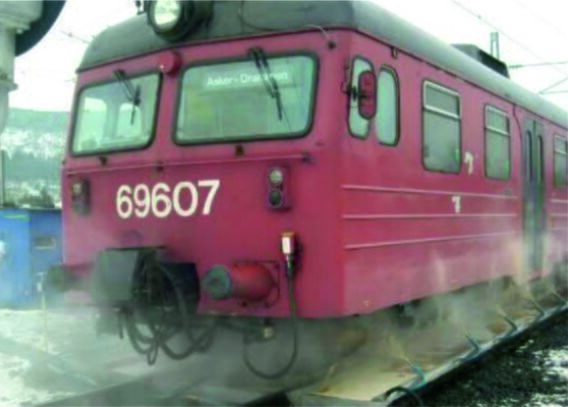Railway traffic anti-icing

Ice prevention is done by either de-icing or anti-icing. De-icing means removal of accreted ice. Anti-icing means treating the material against ice formation. Both methods are used in railway traffic.
Anti-icing in railway traffic can be done with coatings, chemicals and heaters.
Railway switches often have heaters, as they are very vulnerable to icing, and essential for train operation.
Heating of the railway track against icing is a common method. Installing heating systems on the tracks is an efficient anti-icing technique. It also consumes a lot of energy. A Swiss railway company uses about 2,7 million euros per winter for heaters’ energy costs. Electronic heaters are also used in aircrafts. Drawback for heating is their power consumption.
Icephobic coatings in use are often polymers and icephobicity can also be increased with surface topography, like biomimetic surfaces.
Anti-icing agents are widely used. The aim is to coat rails with chemicals that prevent ice adhesion. Ethylene glycol, propylene glycol and urea are used as anti-icing chemicals. Difficulty with these is application and uncertain duration. Chemicals will wear off structures in time.
One anti-icing method used for the rails is to keep trains running regularly. Some railway companies use empty trains to prevent ice build-up on the rails, or on stationary carts. Actively operated railway route will not freeze as easily as an inactive one. Using empty trains to compensate inactivity during the night can be used to prevent large ice or snow build-up.
References
- ↑ Kloow, L. (2011). High-speed train operation in winter climate. KTH Railway Group Publication 1106.
- ↑ Stenroos, C. (2015) Properties of icephobic surfaces in different icing conditions.
- ↑ Li, G. (2018). Fundamentals of icing and common strategies for designing biomimetic anti-icing surfaces. Journal of Materials Chemistry. A, Materials for Energy and Sustainability, 6(28), 13549–13581.
- ↑ Jeevahan, J. (2018). Superhydrophobic surfaces: a review on fundamentals, applications, and challenges. Journal of Coatings Technology and Research, 15(2), 231–250.
- ↑ Five railway hacks to survive winter, Railtech, webpage, available (accessed 4.3.2021): https://www.railtech.com/infrastructure/2019/12/04/five-railwayhacks-to-survive-winter/
- ↑ TRAIN ANTI-ICING SYSTEM, Railshine, webpage, available (accessed 4.3.2021): https://railshine.com/en/products/station-ferroviaire-antigivre/
- ↑ Niklas Kandelin: Icing Factors Affecting Railway Traffic Master of Science Thesis Tampere University Master’s Degree Programme, Materials Science October 2021